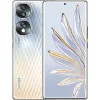Qualcomm Snapdragon 778G Plus

Qualcomm Snapdragon 778G Plus: A Balance of Power and Efficiency in 2025
April 2025
Introduction
In the world of mobile technology, the balance between performance, energy efficiency, and cost has always been key. The Qualcomm Snapdragon 778G Plus, introduced back in 2021, has retained its relevance by 2025 due to a successful architecture and optimizations. This processor continues to be used in mid-range smartphones, offering users stable performance, 5G support, and decent battery life. In this article, we will explore why the Snapdragon 778G Plus remains in demand and who it is suitable for in 2025.
1. Architecture and Process Technology: The Foundation of Stability
The Snapdragon 778G Plus is built on TSMC's 6-nanometer process technology, ensuring low energy consumption (TDP 5 watts) and good heat management. Its architecture includes:
- 8 Kryo 670 cores:
- 1× Cortex-A78 clocked up to 2.5 GHz for heavy tasks.
- 3× Cortex-A78 at 2.4 GHz for multi-threaded operations.
- 4× energy-efficient Cortex-A55 at 1.8 GHz for background processes.
- 2 MB L2 cache to speed up data access.
- Adreno 642 GPU with support for Vulkan 1.1 and OpenGL ES 3.2.
Thanks to the cluster division, the processor flexibly distributes the load: powerful cores are activated during gaming or photo editing, while energy-efficient ones handle standby tasks. This extends the smartphone's battery life.
2. Real-World Performance: Gaming, AI, and More
Gaming:
The Adreno 642 handles most 2025 titles at medium settings. For example:
- Genshin Impact: 40-45 FPS (medium graphics, 1080p).
- Call of Duty: Mobile: 60 FPS (high settings).
Multimedia:
The processor supports displays with refresh rates up to 144 Hz and 4K HDR10 video encoding. This makes it suitable for streaming and editing short videos.
AI Tasks:
The Hexagon 770 DSP accelerates neural network operations:
- Night mode photography is processed in 1-2 seconds.
- Voice assistants (e.g., Google Assistant) operate without delays.
Power Consumption and Heating:
With a TDP of 5 watts, the chip rarely overheats even while gaming. In smartphones with passive cooling (e.g., Xiaomi 12 Lite), the body temperature does not exceed 40°C.
3. Integrated Modules: Connectivity for the Future
- Snapdragon X53 5G modem:
- Download speeds up to 3.7 Gbps (mmWave band).
- Support for Standalone (SA) and Non-Standalone (NSA) modes.
- Wi-Fi 6E:
- Operates in the 6 GHz band for stable connections in congested networks.
- Bluetooth 5.2 with LE Audio support for low-power headsets.
- GNSS: GPS, GLONASS, Galileo, and BeiDou - navigation works even in dense urban environments.
4. Comparison with Competitors: Who Leads?
MediaTek Dimensity 1080 (2022):
- Pros: Higher GPU clock (950 MHz vs. 800 MHz for Adreno 642).
- Cons: Poorer optimization for gaming, lack of Wi-Fi 6E support.
Exynos 1280 (2022):
- Pros: Better energy efficiency in Always-On Display mode.
- Cons: Weaker in multi-threaded tasks (Geekbench 6 Multi-Core: 2800 vs 3008).
Snapdragon 7 Gen 2 (2023):
- Pros: +20% GPU performance.
- Cons: Smartphones based on it start at $450, while devices with the 778G Plus start at $300.
5. Use Cases: Who is the Chip Designed For?
- Gaming: Suitable for casual gamers. For maximum settings in AAA titles, it is better to choose flagships with Snapdragon 8 Gen 3.
- Everyday Tasks: Social media, browsing, streaming—all operate smoothly.
- Photography and Video: Support for cameras up to 200 MP, recording in 4K@30 FPS, and AI filters make it a great choice for bloggers.
6. Advantages and Disadvantages of the Processor
Advantages:
- Energy efficiency: Up to 2 days of use with moderate usage.
- Support for 5G and Wi-Fi 6E.
- Optimization for popular apps (Instagram, TikTok).
Disadvantages:
- Limited performance in VR applications.
- No hardware support for 8K video.
7. Practical Tips for Choosing a Smartphone
- Cooling: Look for models with copper pipes or graphite coatings (e.g., Motorola Edge 30).
- Display: An AMOLED display with a refresh rate of 90-120 Hz will unlock the GPU's potential.
- Battery: Ideally, 4500-5000 mAh (Realme 10 Pro+).
Prices in 2025:
- Budget models: $300-350 (Poco X5 Pro).
- Premium mid-range segment: $400-500 (Xiaomi 12 Lite 5G).
8. Final Conclusion: Who is the Snapdragon 778G Plus Suitable For?
This processor is an ideal choice for those seeking a "no-compromise" smartphone:
- Students: Sufficient power for studying and entertainment.
- Travelers: Long battery life and accurate navigation.
- Beginner Bloggers: Quality shooting and fast content processing.
The Snapdragon 778G Plus proves that 2021 technologies can remain relevant even four years later when balanced well. In 2025, it continues to be a cost-effective option for smartphones priced up to $500.
Basic
3x 2.2 GHz – Kryo 670 Gold (Cortex-A78)
4x 1.9 GHz – Kryo 670 Silver (Cortex-A55)
GPU Specifications
Connectivity
Memory Specifications
Miscellaneous
Benchmarks
Phones with Snapdragon 778G Plus




Comparison of Devices with Snapdragon 778G Plus
Compared to Other SoC
Share in social media
Or Link To Us
<a href="https://cputronic.com/en/soc/qualcomm-snapdragon-778g-plus" target="_blank">Qualcomm Snapdragon 778G Plus</a>